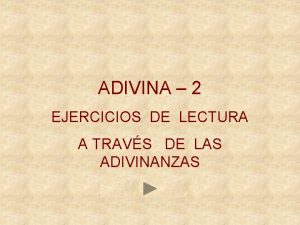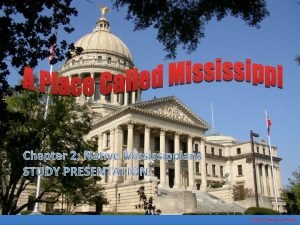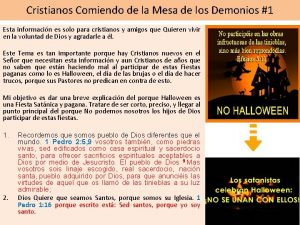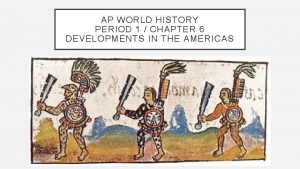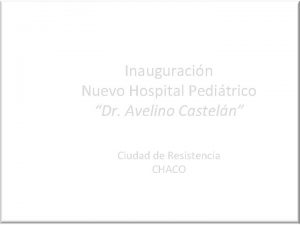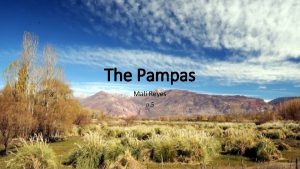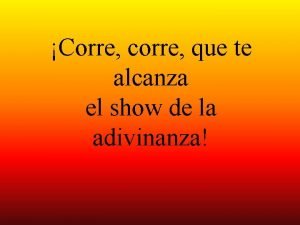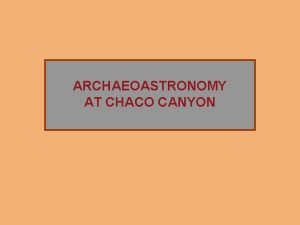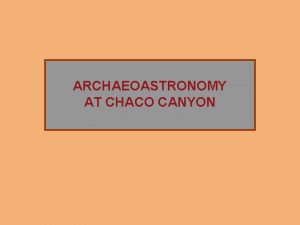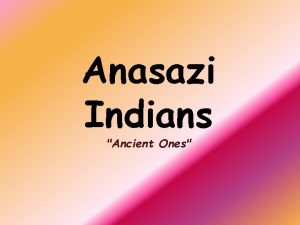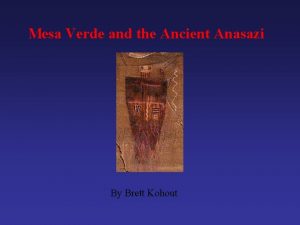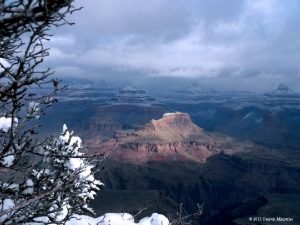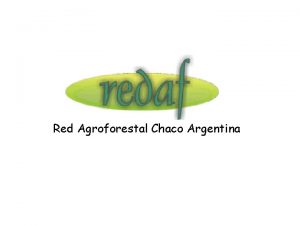The Anasazi and Mississippians Chaco Canyon Mesa Verde











- Slides: 11

The Anasazi and Mississippians Chaco Canyon, Mesa Verde, Cahokia, and Moundville

The Anasazi • No great urban centers like those in Peru or Mesoamerica. • Northern people never developed the corn agriculture – except in the southwest and Mississippi Valley. • Why are there similarities with Mesoamerica?

The Anasazi • Three identifiably different cultures in the North American Southwest by 500 C. E. • Mogollon in eastern AZ and southern NM. • Hohokam in southcentral AZ. • Anasazi in four-corners.

The Anasazi • Anasazi = “ancient ones” • By 750 C. E. inhabited aboveground houses, adobe architecture, and ceremonial rooms dug into the earth. • Sunken ceremonial rooms called kivas. • Anasazi housing became known as pueblos to the Spanish.

The Anasazi • 850 s C. E. – Chaco Canyon in the San Juan River basin on northwest NM became a hub. • Straight roads led to and from the city • Had over 600 rooms.

The Anasazi • After 1130 C. E. , a long drought in Chaco Canyon area. • Gradually, with populations growing and climate worsening, Anasazi moved into cliff dwellings. • Mesa Verde had 220 rooms and 23 kivas. • What is beneficial about these structures?

The Anasazi • Another drought – 1276 to 1299 C. E. forced Anasazi to move again. • What happened to the survivors of the Anasazi?

The Mississippians • These peoples prospered during Roman Empire • The Hopewell people lived mainly in Ohio and Illinois, but networked over much of the continent. • They had copper and silver from Lake Superior, quartz from Appalachia, seashells from Florida, and obsidian and grizzly bear teeth from the Rockies.

The Mississippians • Hopewell trading led to mound-building cultures in the Mississippi Valley. • Developed 500 -900 C. E. and flourished after 900 C. E. • Bows and arrows began to be used. • Maize went from being a commodity to a staple crop.

The Mississippians • Cahokia Creek – dozens of rectangular, flattopped temple mounds. • Developed “Woodhenge” – functioned as a calendar and marked the progression of the sun each year. • Around 1100, Cahokia had 15, 000 people.

The Mississippians • By 1400, mound building cultures began losing their power. • Why do you think these people began losing their power and influence?
 Lisa feiner
Lisa feiner Hablo y no pienso lloró y no siento
Hablo y no pienso lloró y no siento Chapter 2 native mississippians
Chapter 2 native mississippians Cahokia apush definition
Cahokia apush definition Que significa comer de la mesa de los demonios
Que significa comer de la mesa de los demonios Mesa verde ap world history
Mesa verde ap world history Nuevo hospital pediátrico resistencia, chaco
Nuevo hospital pediátrico resistencia, chaco German busch en la guerra del chaco
German busch en la guerra del chaco Pampas food chain
Pampas food chain Cañon del chaco
Cañon del chaco Ipap
Ipap Soy una loca amarrada solo sirvo para ensalada
Soy una loca amarrada solo sirvo para ensalada

